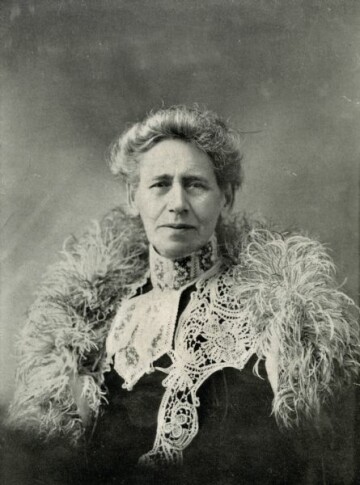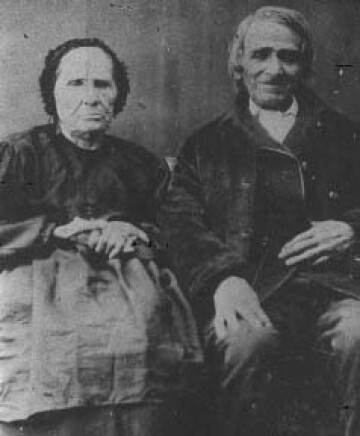4 Eccentric 19th Century Wisconsinites
The 19th century was weird. Really weird. Consult any book of historical accounts from the time period and you'll find sea monsters, "zombies," ghosts, cattle monstrosities, and Hodags. The people were weird too, and 19th century Wisconsinites were no exception. Every town from Madison to Mackinac Island had its colorful characters, so let's take a look at a witch doctor, a town drunk, a mystic, and a man with a window in his stomach.
1. Renown Wisconsin Mining Mystic, Mary Hayes-Chynoweth

In 1853, schoolteacher Mary Hayes-Chynoweth claimed to have been pushed to the floor of her kitchen and inhabited by a disembodied force. Her account goes on to say that she began speaking in tongues, and a voice told her that she would spend the rest of her life healing people. So clearly it made sense to devote her life to spiritual medicine andmysticism. Although seances and other supernatural exploits were sweeping the nation at the time, Mary held that these were hoaxes and that her powers derived from God connecting her to a "force" or "power." While she certainly had her skeptics, a bizarre tale unfolded in 1883 when Mary claimed the "Power" had told her to direct her sons to change careers from forestry to mining. Then, with no knowledge of mining whatsoever, she showed them the exact place to dig to uncover rich veins of ore. Her family then became incredibly wealthy and she founded the town of Hurley. Like you do.
2. Wisconsin's First "Doctor," Aunt Mary Ann
To the people of Prairie du Chien, their doctor was known only as Aunt Mary Ann. A former slave who came upriver from Louisiana near the turn of the 19th century, she eventually married Charles Menard (yes, that Menard) and mothered over twelve children. She was the first person in Wisconsin, in the early days of permanent settlements, to practice the healing arts, and is thus considered our state's first "doctor." She charged fees, visited patients, and used healing salves and herbs. Until, and even slightly after, a surgeon arrived at the fort in Prairie du Chiene in 1816, Aunt Mary Ann carried her "device and yarb drink" to heal the sick (results may vary). In one case, she saved a baby who'd sustained a serious head wound from an Indian attack, using a silver plate to patch her little skull. The baby lived to be over 80 years old.
3. The Man with a Window in His Gut, Alexis St. Martin

Fair warning: this one's really gross. In the summer of 1822, fur trader and voyageur Alexis St. Martin was the victim of an accidental shotgun blast. It tore a hole in his side and exposed his stomach. US Army surgeon William Beaumont treated him and helped him recover over the course of the following months. Beaumont was fascinated with the way that the wound healed, and because the now-disabled Martin couldn't make a living at his old career, the good doctor made him an offer. He hired Martin as a servant and would carry out a wide array of experiments on him to better understand the digestive process. Now while Beaumont's discoveries were later refined into modern gastronomy, I just wish there was an easier way than installing a window in a man's stomach to watch food digest.
4. Madison's Beloved Drunkard, "Turtle Toes"
The "town drunk," a comical staple archetype from old-timey movies and books, now seems more of a menace to society. However, in the 1870s, one such town drunk charmed his way through the streets of Madison. Pinneo was a shingle salesman who, according to record, was "ever ready to do the bidding of those choosing to command his services when sober, which was only when every artifice and cunning had failed to provide the means of getting drunk." He was given the name "Turtle Toes" because he never wore shoes and his toes were hard, callous, bent, and looked like turtle necks. What a scamp.






















